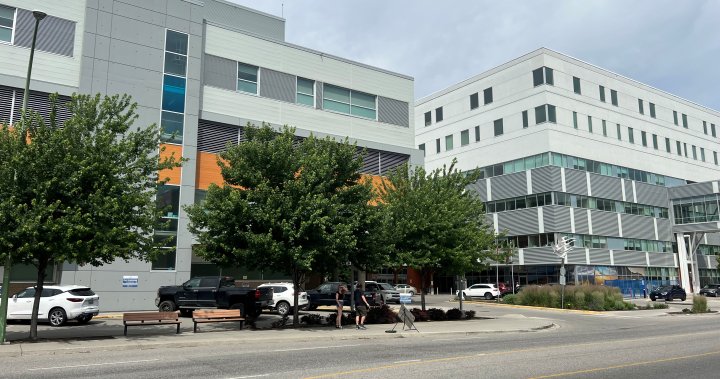I arrived at Kelowna General Hospital on a crisp autumn morning. The parking lot was nearly full—a common sight at British Columbia’s fourth-largest hospital. Inside, the emergency department hummed with controlled chaos, medical staff moving with practiced efficiency despite the strain evident in their postures.
“We’re working in a system that’s increasingly unsafe for patients,” Dr. Jeff Eppler told me, his voice steady but tinged with frustration. We sat in a small consultation room away from the bustle of the ER where he’s worked for over two decades. “This isn’t about money. It’s about being able to provide proper care.”
The emergency physicians at Kelowna General Hospital are locked in an escalating dispute with Interior Health, the regional health authority. Earlier this week, physicians released a statement describing a “toxic work environment” and raising serious concerns about patient safety. The conflict reached new heights after Interior Health’s president and CEO Susan Brown issued a public response that doctors say misrepresented their concerns.
“We were shocked by the response,” said Dr. Eppler, who serves as department head. “It completely missed the point of what we’re trying to address.”
The physicians’ original letter, signed by all 26 emergency doctors at the hospital, detailed concerns about overcrowding, understaffing, and leadership issues that they claim have led to dangerous conditions for patients. According to data from the BC Ministry of Health, emergency department visits across Interior Health increased by 12% in the past year, while staffing levels remained largely unchanged.
Dr. Cara Wall, another veteran emergency physician, joined our conversation. “When we’re operating at 150% capacity with the same resources, patient care suffers,” she explained. “We’ve documented cases where people have waited 12 hours with serious conditions. Some have deteriorated while waiting.”
The doctors claim their internal attempts to address these issues have been repeatedly dismissed or minimized. Their public statement came after months of unproductive meetings with administration.
Interior Health’s response, published on their website, acknowledged the “dedication of all healthcare staff” but characterized the situation as primarily related to capacity challenges faced by hospitals province-wide. Brown’s statement noted that “significant investments” had been made in emergency services.
This framing particularly frustrated the physicians.
“This isn’t just about capacity,” Dr. Wall said. “It’s about a management approach that ignores frontline concerns and a culture that punishes those who speak up.”
When I reached out to Interior Health for comment, a spokesperson provided a statement reiterating points from Brown’s letter and declining to address the specific allegations about workplace culture. They pointed to a province-wide healthcare staffing shortage as the primary challenge.
The British Columbia Nurses Union has quietly backed the physicians. A representative who requested anonymity told me that nurses at KGH have experienced similar concerns but fear professional repercussions for speaking publicly.
The dispute reflects broader tensions in Canadian healthcare, where a system designed decades ago struggles to meet contemporary demands. A 2023 report from the Canadian Institute for Health Information found that emergency department wait times in B.C. have increased by 22% since 2019, with smaller communities often facing the most significant challenges.
Dr. Kathleen Ross, president of Doctors of BC, told me by phone that physician burnout has reached crisis levels across the province. “When experienced doctors are raising alarms about patient safety, we need to listen,” she said. “These aren’t issues that can be dismissed with talking points about system pressures.”
Walking through downtown Kelowna later that day, I spoke with Marian Kraft, a 67-year-old resident who spent nine hours in the KGH emergency department last month after experiencing chest pain.
“The doctors and nurses were amazing, but they looked exhausted,” she recalled. “One nurse told me they hadn’t had a break in twelve hours. How is that sustainable?”
For the communities served by Kelowna General Hospital—approximately 250,000 people across the Central Okanagan—the dispute raises troubling questions about emergency care. The hospital serves as the major referral center for the southern interior region, meaning disruptions can have far-reaching consequences.
The doctors have requested formal mediation with Interior Health leadership, with provincial health officials present. So far, Interior Health has not publicly responded to this request.
“We didn’t choose this path lightly,” Dr. Eppler said as our conversation concluded. “But when patient safety is at risk, silence isn’t an option.”
As I left the hospital, the waiting room was filling up again. A digital display showed current wait times: 5.5 hours for non-urgent cases. A young mother tried to comfort her feverish toddler. An elderly man grimaced as he shifted in his wheelchair.
For now, the doctors continue their work amid the uncertainty, hoping their unprecedented public stand will finally bring meaningful change to a system they say is failing both patients and providers.






